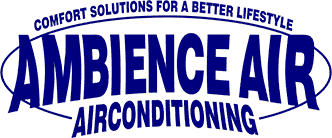
As the summer season fast approaches, West Australians are getting to ready to deal with the traditional December to February heat, which would be almost impossible without a reliable air conditioning system.
Next time you are sitting down, cooling off during the long, hot summer days, listening to the quiet summer hum of your AC, stop and think… have you ever wondered how a basic AC unit actually works? In this article, we will explain how your air conditioner works; how it absorbs warm air from a room and turns into cool air which is then passed back into the room to keep everyone cool.
Temperature in Perth: Summer 2019-2020
In the Bureau of Meteorology’s weather outlook for the rest of the year, “… daytime temperatures are likely to be warmer than average across Australia for the remainder of 2019 and early 2020.”
They also forecasted that nights will be warmer nationwide in the summer, between the months of December to February. That said, it is already implied that Perth and the rest of WA will be hotter than the rest of the country, averaging between 28 to 30 degrees Celsius in December alone.
Learning about refrigeration
Whether you have a split-system air conditioner, a ducted reverse cycle air conditioning system, or an evaporative air conditioner, one thing remains the same: all types of air conditioners use refrigeration to keep indoor air cool. Refrigerants can be ammonia, hydrocarbons, and even sulphur dioxide but for air conditioning, the most common refrigerants used are fluorocarbons like R-22 and R-410A.
An air conditioner comes with a refrigerant that absorbs heat from a room through a process called phase conversion. In this method, special chemical compounds are constantly converted from liquid to gas and back to liquid again—which makes it possible to blow cool air into the room.
But how does the transfer of heat to cool air happen through an AC? Simple. The fans inside the air conditioner collect the warm air and move it to the closed coil system filled with refrigerants. Phase conversion then happens and the heat is removed and then replaced with the cool breeze.
Air Conditioning: the details
For you to get a clearer picture of how the hot air is replaced with cool air, you need to understand the anatomy of an air conditioner. Aside from the refrigerant, it is made up of three main parts: the compressor, condenser and evaporator.
Compressor
The refrigerant needs to be heated up and must be warmer than the air outdoors so that it will be able to remove heat outside as well. To achieve that, the compressor plays a big role. It compresses gas compactly so that the refrigerant becomes pressurised, which also increases its temperature.
Condenser
Once the refrigerant’s become hot and pressurised, it goes to the condenser coil right away. The condenser then takes care of transferring the heat to the environment. Once the heat goes from refrigerant to the outdoors, the refrigerant returns to its liquid state and then cools down through an expansion valve.
Evaporator
The evaporator coil receives the cooled-down, liquefied refrigerant that just went through the expansion valve. When the blower blows indoor air over the now-cold evaporator coil, the heat from the room is immediately absorbed into the unit and then discharged into the compressor to start the refrigeration cycle again.
To refresh, here’s how air conditioning works.
- The vents distributed around the rooms in your home extract the heat from your home.
- The hot air passes by the extra cold evaporator coils, and then gets absorbed by the refrigerant.
- The hot air picked up by the refrigerant is released into the compressor. At this point, the compressor then pressurises and heats up the refrigerant.
- The high-pressure, high-temperature refrigerant now flows through the condenser coil.
- The condenser fan pushes high-heat air outdoors (not inside the house).
- The refrigerant moves through the expansion valve where it is cooled down and depressurised.
- Cool air is blowed through the ducts or vents.
- The refrigeration cycle repeats again.
Air Conditioning: then and now
The technology used in air conditioners has gone a long way since the time it was conceptualised by Willis Carrier back in 1933. In one of his patented designs, it can be noted that all of today’s AC systems follow his concept: hot air from the room is absorbed by the unit; hot air goes through refrigerator chiller pipes; once conditioned, air is then blowed out to the room through a fan.
However, there came a time when ACs posed grave danger to the environment. The use of chlorofluorocarbons (CFCs) as refrigerants resulted in the thinning of the Earth’s ozone layer, providing human beings with little protection from the Sun’s damaging UV rays.
Today’s air conditioning technology is more sophisticated and understanding of the negative impacts of refrigerants, particularly CFCs to the Earth’s ozone layer. Now more environmental-friendly alternatives are made available and various countries have made a move in banning the use of CFCs in air conditioning refrigeration.
Here at Ambience Air, you can expect our air conditioners to be compliant with environmental standards. They are all considered Ozone-Friendly and do not result in the further degradation of the atmosphere. You can choose from the top brands that we feature: Fujitsu, Breezair, Panasonic, Daikin, Samsung, Coolair, and more.
If you want to learn more about air conditioning or if you need more explanation on how does a split system air conditioner work, do not hesitate to get in touch with our AC experts here at Ambience Air.




